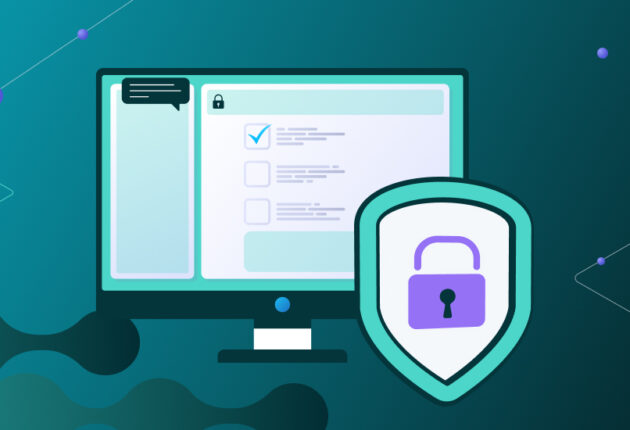In a world where data has become akin to physical goods, flowing freely across geographies and with few constraints, safety issues and new jurisdictional restrictions on data flows present tensions and challenges. As companies expand their operations across borders, they face the daunting challenge of navigating a complex web of data privacy regulations and compliance requirements. Enter differential privacy, a powerful technique that has emerged as a promising solution for safeguarding data privacy while allowing compliance with international regulations (see also our article “Why Differential Privacy Fits All Regulations”). In this article, we explore the challenges businesses face when transferring data across borders, the importance of adhering to global cross-border privacy rules, and how differential privacy can help.
- Understanding cross-border data transfers
- Implementing Differential Privacy in CBDT
- Examples of companies that have implemented Differential Privacy in CBDT
- Conclusions
Understanding cross-border data transfers
What are cross-border data transfers?
The rate of data generation is experiencing an astonishing surge. An impressive statistic reveals that a staggering 90% of the world’s data has materialized within the past two years, and this data volume doubles every two years.1 The ongoing digital transformation we are collectively experiencing has given rise to an unparalleled surge in the flow of data within countries and across international borders. Data exchange between servers within the same country is called domestic transfer, and cross-border data transfer (CBDT) occurs when data travels between servers in different countries. According to OECD estimates, data exchange currently contributes a remarkable $2.8 trillion to the global GDP and is projected to reach an astounding $11 trillion by 2025.2
Multinational corporations rely heavily on data flow in their daily operations. They leverage data sourced from their global affiliates to execute many internal tasks and routine decision-making processes. These activities include transferring human resources data to and from corporate headquarters, transmitting data to overseas research and development centers, overseeing production procedures, and providing post-sale service.
Challenges of cross-border data privacy
Cross-border data privacy refers to protecting personal data as it moves across national boundaries. It involves ensuring that individuals’ privacy rights are upheld regardless of where their data is processed or stored. In an era where data knows no borders, maintaining the integrity and confidentiality of personal information is paramount. As businesses expand their operations globally, they encounter a myriad of challenges when it comes to cross-border data privacy. Here are some of the key hurdles:
- Divergent legal frameworks: different countries and regions have their own data privacy laws and regulations, each with its own requirements and nuances (see section below, “Ensuring compliance with data protection laws”). Navigating this complex landscape can be daunting, especially for multinational companies operating across multiple jurisdictions. Failure to comply with these regulations can result in hefty fines, reputational damage, and legal consequences.
- Data localization requirements: some jurisdictions mandate that certain types of data must be stored within their borders, complicating cross-border data transfers. Some countries have already implemented data localization laws that mandate that certain types of data must be stored and processed within their borders, and other countries are sure to follow. These laws can pose significant challenges for companies that rely on centralized data processing and storage facilities, potentially hindering their ability to leverage global resources and infrastructure.
- Jurisdictional issues: determining which country’s laws apply to cross-border data transactions can be ambiguous, leading to legal uncertainties.
- Cultural differences: cultural norms regarding privacy and data protection may differ across regions, requiring companies to tailor their approaches accordingly.
Implementing Differential Privacy in CBDT
What is Differential Privacy?
While global cross-border privacy rules are essential, they may not be sufficient to address all data privacy concerns, particularly when it comes to sensitive or personal data. This is where differential privacy comes into play.
Differential privacy is a mathematical concept and a set of techniques that aim to protect the privacy of individuals within a dataset. It achieves this by introducing controlled noise or randomization to the data, ensuring that the presence or absence of any individual record does not significantly affect the overall statistical properties of the dataset. It allows organizations to extract valuable insights from datasets while protecting individuals’ sensitive information.
How Differential Privacy protects data privacy
By applying differential privacy techniques, organizations can analyze and derive insights from sensitive data while minimizing the risk of re-identification or privacy breaches. This is achieved by carefully calibrating the amount of noise added to the data, striking a balance between privacy protection and data utility.
Differential privacy has a wide range of applications across various industries and domains, including:
- Healthcare: enabling research and analysis on sensitive medical data while protecting patient privacy.
- Government and census data: allowing statistical agencies to release aggregate data for policy-making and research while preserving individual privacy.
- Online advertising: enabling targeted advertising without compromising user privacy.
- Machine learning and AI: training models on sensitive data while minimizing the risk of privacy breaches.
Differential privacy provides a powerful tool for organizations to navigate the complex landscape of cross-border data transfers, enabling data analysis and insights while ensuring robust privacy protection and regulatory compliance.3 Among the key benefits, differential privacy helps with:
- Protecting individual privacy: by introducing controlled noise or randomization to datasets, differential privacy ensures that individual records remain indistinguishable, minimizing the risk of re-identification and potential privacy breaches.4 This allows organizations to derive value from data while safeguarding sensitive information during cross-border transfers.
- Facilitating compliance with data privacy regulations across jurisdictions: different countries and regions have varying data privacy laws and regulations governing cross-border data transfers. Differential privacy can help organizations meet these diverse regulatory requirements by providing a robust privacy-preserving mechanism.5
- Building trust with customers, partners, and stakeholders: implementing differential privacy demonstrates a company’s commitment to protecting the privacy of individuals whose data is being transferred across borders. This can help build trust and strengthen relationships with customers, employees, and business partners.6
- Reducing legal and reputational risks: by minimizing the risk of re-identification and privacy violations, differential privacy can help organizations mitigate legal liabilities, fines, and reputational damage that may arise from data breaches during cross-border data transfers.7
- Enabling collaborative data analysis and sharing: differential privacy techniques, such as federated learning and secure multi-party computation, allow organizations to collaborate on data analysis and model training without directly sharing sensitive data across borders.8 This facilitates cross-border data sharing while preserving privacy.
Data Peace Of Mind
PVML provides a secure foundation that allows you to push the boundaries.

Ensuring compliance with data protection laws when implementing DP in CBDT
When implementing differential privacy for CBDT, companies need to comply with various data protection laws such as:
- General Data Protection Regulation (GDPR) (European Union): The GDPR has strict requirements for cross-border data transfers, including the use of approved transfer mechanisms like Standard Contractual Clauses (SCCs) or Binding Corporate Rules (BCRs).9 Implementing differential privacy can help meet the GDPR’s data protection principles, like data minimization and privacy by design.10
- California Consumer Privacy Act (CCPA) (United States): the CCPA grants California residents certain data privacy rights, including the right to opt out of the sale of their personal information. Companies using differential privacy for cross-border transfers involving California residents must ensure compliance with the CCPA’s requirements.11
- Personal Information Protection and Electronic Documents Act (PIPEDA) (Canada): PIPEDA governs the collection, use, and disclosure of personal information in commercial activities. Companies must implement appropriate security safeguards, including differential privacy techniques when transferring personal data across borders.12
- Lei Geral de Proteção de Dados (LGPD) (Brazil): the LGPD has strict requirements for cross-border data transfers, including the use of specific legal bases and data protection measures. Differential privacy can help companies meet the LGPD’s principles of data minimization and purpose limitation.13
- Data Protection Act (DPA) (United Kingdom): the UK’s DPA, which is based on the GDPR, has similar requirements for cross-border data transfers. Companies must implement appropriate safeguards, such as differential privacy, when transferring personal data outside the UK.14
- Personal Data Protection Bill (PDPB) (India): the proposed PDPB includes data localization requirements and restrictions on CBDTs. Companies may need to implement differential privacy techniques to comply with these requirements while enabling cross-border data sharing.15
By following these practices, companies can leverage the privacy-preserving benefits of differential privacy while demonstrating their commitment to upholding data protection laws during cross-border data transfers:
- Conduct data protection impact assessments (DPIAs): perform comprehensive DPIAs to identify potential risks and evaluate the effectiveness of differential privacy techniques in mitigating those risks.16 DPIAs help ensure the implementation aligns with data protection principles like data minimization and purpose limitation.
- Implement robust technical and organizational measures: adopt strong technical safeguards like encryption, access controls, and auditing mechanisms alongside differential privacy.17 Organizational measures like employee training, incident response plans, and regular privacy reviews are also crucial.
- Leverage approved transfer mechanisms: use approved cross-border transfer mechanisms like Standard Contractual Clauses (SCCs) or Binding Corporate Rules (BCRs) when transferring differentially private data.18 These provide a legal basis and stipulate data protection obligations.
- Obtain explicit consent where required: in cases where explicit consent is mandated by law for cross-border transfers, ensure that the consent process is transparent and informs individuals about the use of differential privacy.19
- Maintain comprehensive documentation: keep detailed records of data transfers, the differential privacy techniques employed, privacy risk assessments, and the legal bases relied upon.20 This documentation aids compliance reviews and demonstrates accountability.
- Continuously monitor and audit: regularly monitor and audit the implementation of differential privacy, assessing its effectiveness in protecting privacy and ensuring compliance with evolving data protection regulations.21
- Collaborate with regulators: engage with relevant data protection authorities to seek guidance on the appropriate use of differential privacy for cross-border transfers and ensure alignment with regulatory expectations.22
Challenges when implementing differential privacy in CBDT
Companies face several challenges when implementing differential privacy for CBDT.
By proactively addressing these challenges through robust strategies, companies can leverage the benefits of differential privacy while ensuring compliance with cross-border data protection laws and maintaining data utility for their global operations. Among these challenges are:
- Balancing privacy and utility: companies can address this by carefully calibrating the privacy budget and noise injection levels based on data sensitivity and use cases. Also, they can implement advanced differential privacy techniques like sample-and-aggregate or federated analysis to improve utility.23
- Technical complexity: companies can overcome this by investing in training and upskilling employees on differential privacy techniques. Also, they can leverage general-purpose differential privacy frameworks and tools to simplify implementation.24
- Data correlation and assumptions: companies can mitigate this by carefully evaluating the data characteristics and assumptions before applying differential privacy. Furthermore, they can explore alternative privacy-enhancing techniques like secure multi-party computation for highly correlated data.25
Examples of companies that have implemented Differential Privacy in CBDT
Here are some examples of companies that demonstrate how differential privacy has emerged as a powerful tool for enabling cross-border data transfers while robustly protecting individual privacy, allowing companies to leverage global data for insights and innovation:
- Google has been a pioneer in applying differential privacy to various products and services. It uses differential privacy to collect statistics from users’ web browsing data and share it across borders to improve products like the Google Chrome browser.26 Google also employs differential privacy for analytics and machine learning across its global operations.
- Apple has integrated differential privacy into many of its products and services, including data collection for new words in keyboard dictionaries, emoji suggestions, and improving Siri and other intelligent features.27 This allows Apple to gather useful data from users globally while rigorously protecting individual privacy during cross-border transfers.
- Microsoft has implemented differential privacy in its Windows Insiders program to collect diagnostic data from users worldwide.28 This data helps improve the Windows operating system while safeguarding individual privacy during international transfers.
- The US Census Bureau has successfully deployed differential privacy techniques to enable the public release of census data summaries while protecting the privacy of individual respondents.29 This has allowed the sharing of aggregate census data across borders while preventing re-identification risks.
- Uber has used differential privacy to analyze mobility data from rides across multiple countries and cities.30 This has enabled Uber to derive useful insights for urban planning and traffic management while maintaining strong privacy protections during cross-border transfers of this data.
- Several major technology companies, such as Samsung, Nvidia, and IBM, have invested in the research and development of differential privacy techniques to facilitate secure cross-border data sharing and global analytics while upholding stringent privacy standards.
Conclusion
In conclusion, cross-border data privacy is a multifaceted challenge that requires a holistic approach encompassing legal, technical, and organizational measures. Differential privacy emerges as a promising solution for preserving privacy while enabling the seamless flow of data across international borders. By carefully calibrating the amount of noise added to the data, differential privacy techniques can ensure that individual records remain indistinguishable, safeguarding personal information while preserving the overall statistical properties of the dataset. By adopting differential privacy techniques and embracing best practices, organizations can navigate the complexities of cross-border data privacy with confidence, ensuring the protection of individuals’ privacy rights in an increasingly interconnected world.
2 International Chamber of Commerce, (2021, May), Joint Business Statement on the OECD Committee, https://iccwbo.org/news-publications/policies-reports/joint-business-statement-on-the-oecd-committee-on-digital-economy-policys-work-to-develop-an-instrument-setting-out-high-level-principles-or-policy-guidance-for-trusted-government-access-to-p/
3 Kazutoshi Kan, February 2022, Seeking The ideal Privacy Protection, https://www.imes.boj.or.jp/research/papers/english/23-E-02.pdf
4 See Note 3.
5 Camille Ford, 23 February, 2024, “The EU-US Data Privacy Framework,”CEPS, https://www.ceps.eu/the-eu-us-data-privacy-framework-is-a-sitting-duck-pets-might-be-the-solution/
6 Geo CTRL, 19 October 2023, “Cross Border Data Transfers” Linkedin, https://www.linkedin.com/pulse/cross-border-data-transfers-how-ensure-gdpr-compliance-geoctrl-k5yhe
7 Epiq, “Five Best Practices to Ensure Compliance”, Epiq, https://www.epiqglobal.com/en-us/resource-center/articles/cross-border-data-protection-laws
8 See Note 5
9 See Note 6
10 Joanna Kaminska, 22 March 2024, “Cross Border Data Transfer,” Anonos https://www.anonos.com/blog/cross-border-data-transfer
11 See Note 7
12 See Note 6
13 See Note 10
14 See Note 7
15 See Note 10
16 See Note 6
17 See Note 7
18 Linkedin https://www.linkedin.com/advice/0/how-do-you-manage-data-transfers-sharing-across-borders
19 See Note 6
20 See Note 7
21 See Note 18
22 See Note 10
23 Bjorn Aslak Juliussen, !9 July 2023, “The Third Country Problem Under GDPR,” Oxford Academic, https://academic.oup.com/idpl/article/13/3/225/7226249
24 See Note 3
25 World Economic Forum, January 2023, https://www3.weforum.org/docs/WEF_Data_Free_Flow_with_Trust_2022.pdf
26 See Note 5
27 Theodor Augustinos, December 2023, “New Mechanism For Cross Border Data Transfer,” Locke Lord, https://www.lockelord.com/newsandevents/publications/2023/12/new-mechanism-for-cross-border-data-transfer
28 See Note 3
29 See Note 3
30 See Note 3










